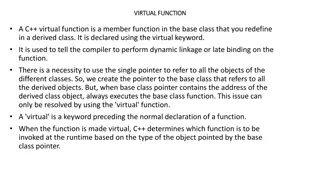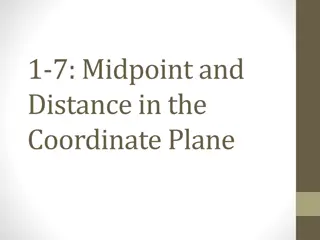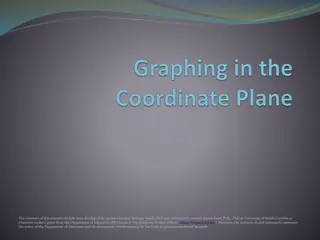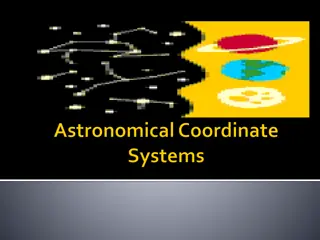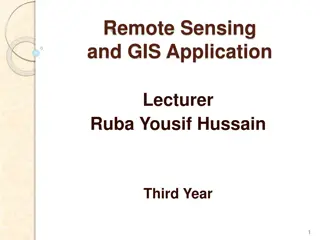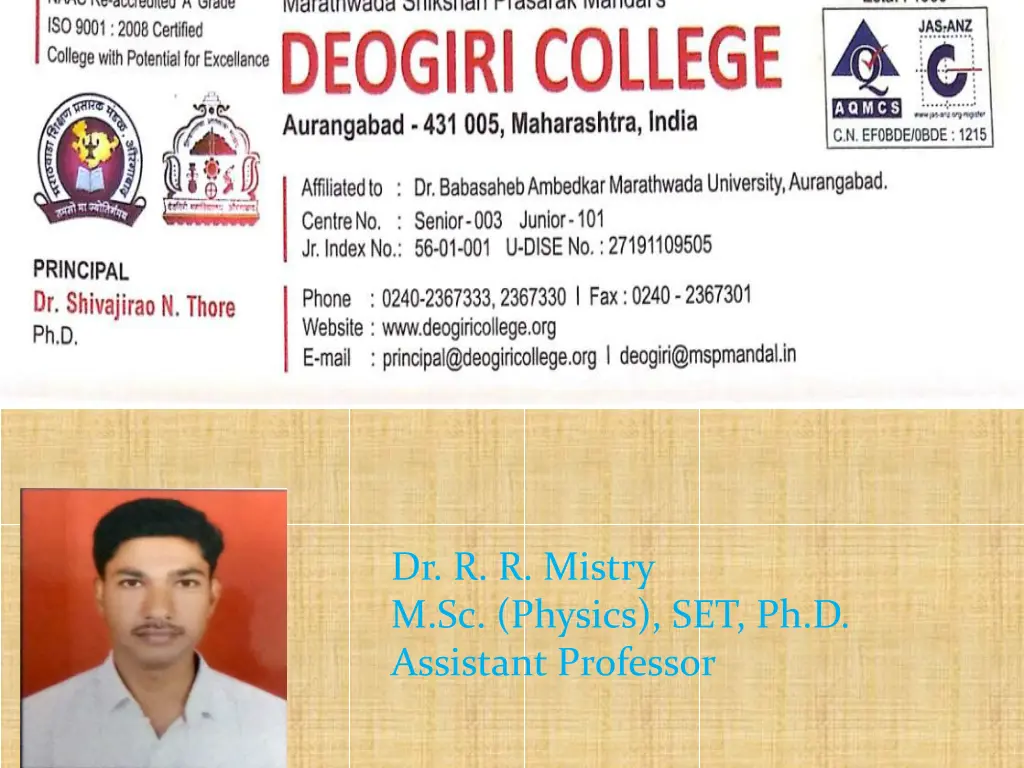
Generalized Coordinates and Degree of Freedom in Physics
Explore the concept of generalized coordinates and degree of freedom in physics, understanding how holonomic constraints affect the number of independent coordinates needed to describe a system. Learn about the degrees of freedom for systems like a simple pendulum and particles moving on a sphere, as well as the notion of virtual displacement and virtual work.
Download Presentation

Please find below an Image/Link to download the presentation.
The content on the website is provided AS IS for your information and personal use only. It may not be sold, licensed, or shared on other websites without obtaining consent from the author. If you encounter any issues during the download, it is possible that the publisher has removed the file from their server.
You are allowed to download the files provided on this website for personal or commercial use, subject to the condition that they are used lawfully. All files are the property of their respective owners.
The content on the website is provided AS IS for your information and personal use only. It may not be sold, licensed, or shared on other websites without obtaining consent from the author.
E N D
Presentation Transcript
Dr. R. R. Mistry M.Sc. (Physics), SET, Ph.D. Assistant Professor
Generalized Co-ordinates and degree of Freedom:- A holonomic constraint has an effect of reducing the total number of independent co- ordinates required to represent a system. The minimum co-ordinates required to describe a system is known as the generalized co- ordinates and the number of generalized co- ordinates required to describe the system is called as degree of freedom.
(i)For a simple pendulum of length l, the generalized co-ordinate is . Hence the degree of freedom is one. Notice that the position of bob moving in a plane can be expressed in terms of Cartesian co-ordinate (x,y) as well as the polar co- ordinate (r, ). (ii)For particle moving on sphere, the generalized co-ordinates are and . Hence the degreeof freedom is two.
We would require four co-ordinates (two for each bob) to describe the system completely. But two of them are eliminated by the equations of constraints. Hence degree of freedom is two. Thus only two co-ordinates, one each of
Degree motion:- of freedom for a constrained A system having N constituent particles is described by 3N co-ordinates. When K constraints are then only (3N-K) independent co-ordinates are required to represent it. Hence the system has n=3N-K degree of freedom.
Virtual Displacement and Virtual Work:- Virtual displacements displacements. These infinitesimal and instantaneous. On the other side, the real displacements take finite time for their realization. The virtual displacements are given to the system in such a manner that the constraint forces do not do any work. When a particle is given virtual displacement by force, the amount of work done is known as virtual work. are imaginary displacements are
The total amount of work done by the external forces for virtual displacement of N-particles is known as virtual work and the total virtual work done is zero. This is known as the principle of virtual work. It is applicable to system in the equilibrium state only.


